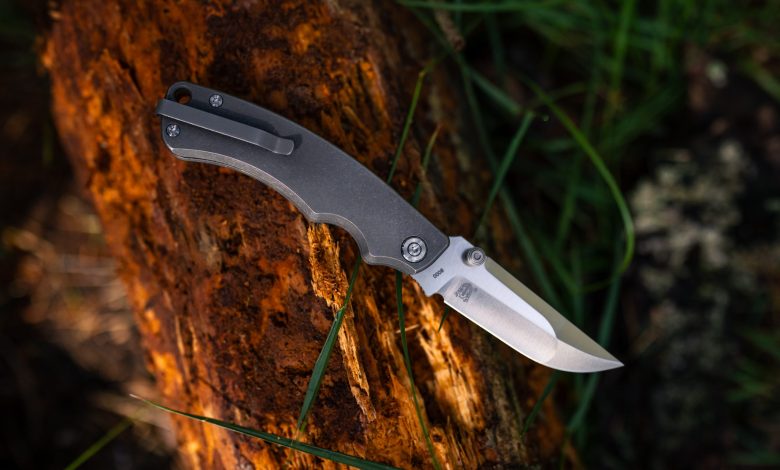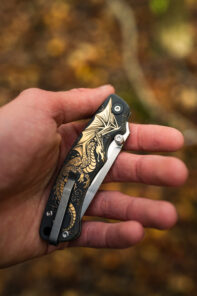Shop Talk: Hoo Knives on First-Ever Slipjoint Model

U.K.-based Hoo Knives has always kept an eye out for the particular needs of users in its home country, and their latest release, the Dragon, sees them answering a long-time fan request: a Hoo design with a traditional slipjoint non-locking mechanism.
“Since Hoo Knives is U.K.-based, the vast majority of our customers are on the look out for UK-friendly, sub-3-inch, non-locking folding knives they can lawfully carry every day,” Carl D. Pearson, Hoo Knives founder, told us in a recent email interview. The company’s bread and butter has been its double-detent non-locking knives, which use detent bearings to keep the blade secure, but not locked, in the open and closed positions. “Over time, we had a lot of requests for a slipjoint and I was always drawn to the idea for something that felt more rooted in tradition,” Pearson notes, acknowledging the long history of traditional slipjoint craft in England. “A slipjoint carries a sense of heritage, especially in the UK. On a personal level, they have a special place in my heart, with an old school Sheffield steel Barlow slip joint being my first ever pocket knife as a child.”

Pearson points out that there is more than one way to design a non-locking knife, with different mechanisms serving the same function in their own way, just as is the case in the locking knife market, where a frame lock has a different character than, say, a crossbar lock. ” A slipjoint and a double detent each offer a different experience in the hand, and for me, they both absolutely have a place in the world,” he says. “In countries where people rely on non-locking knives for everyday carry, having more than one mechanical style really matters, as it gives the community more choice in how they want their knife to feel as well as function.”
The Dragon’s 2.5-inch blade does indeed feel different than the double-detent models in the Hoo corral. Pearson says that the double-detent method leads to something closer in action to a modern folder, with a light and snappy action. By contrast, a slipjoint moves at its own distinctive pace – what connoisseurs call its ‘walk and talk.’ “It’s slightly slower and more intentional, and that’s part of the charm,” he continues. “There’s a presence to it that makes the knife feel like something you engage with, not just open.”

That presence takes a fine eye and patience to get right. “Everything comes down to spring tension, walk-and-talk, and how the blade transitions between positions,” Pearson says. “Small changes in geometry make huge differences in usability, so we spent a lot of time refining the cam surfaces and spring profile to achieve a confident, positive snap without making it fatiguing to use.”
Of course, the other half of the Hoo Knives identity is modern materials and construction – and the Dragon does not break from the pattern there. Its eye-catching, upswept, almost tanto-ish blade is made from M390 powder metallurgy steel. “[It] was designed with a mentality of aiming to achieve practical beauty, in the sense that it would be a great all-rounder,” Pearson tells us. “The profile gives a strong, usable tip for detail work, while the main edge has a gentle curve that performs well in everyday cutting tasks like opening packaging, slicing and small food prep.”
Now that the Dragon is on the market, we asked Pearson if more slipjoint knives would grace the Hoo Knives catalog down the line. “With the Dragon proving so popular I highly doubt it will be our last slipjoint,” he answers. “I’m keen to add more designs to the Hoo Slipjoint range in time if its what our community continues to show demand for!”
The Dragon is available now.
Knife in Featured Image: Hoo Knives Dragon
The information provided by KnifeNews.com (the “Site”) is for general recreational purposes only. The views and opinions expressed on the Site are those of the author or those quoted and do not necessarily reflect the views of any entities they represent. All information on the Site is provided in good faith, however, we make no representation or warranty of any kind, express or implied, regarding the accuracy, adequacy, validity, reliability, availability, or completeness of the information on the Site. Under no circumstance shall we have any liability to you for any loss or damage as the result of the use of the Site or reliance on any information provided. Your use of the Site and your reliance on any information on the Site is solely at your own risk.







